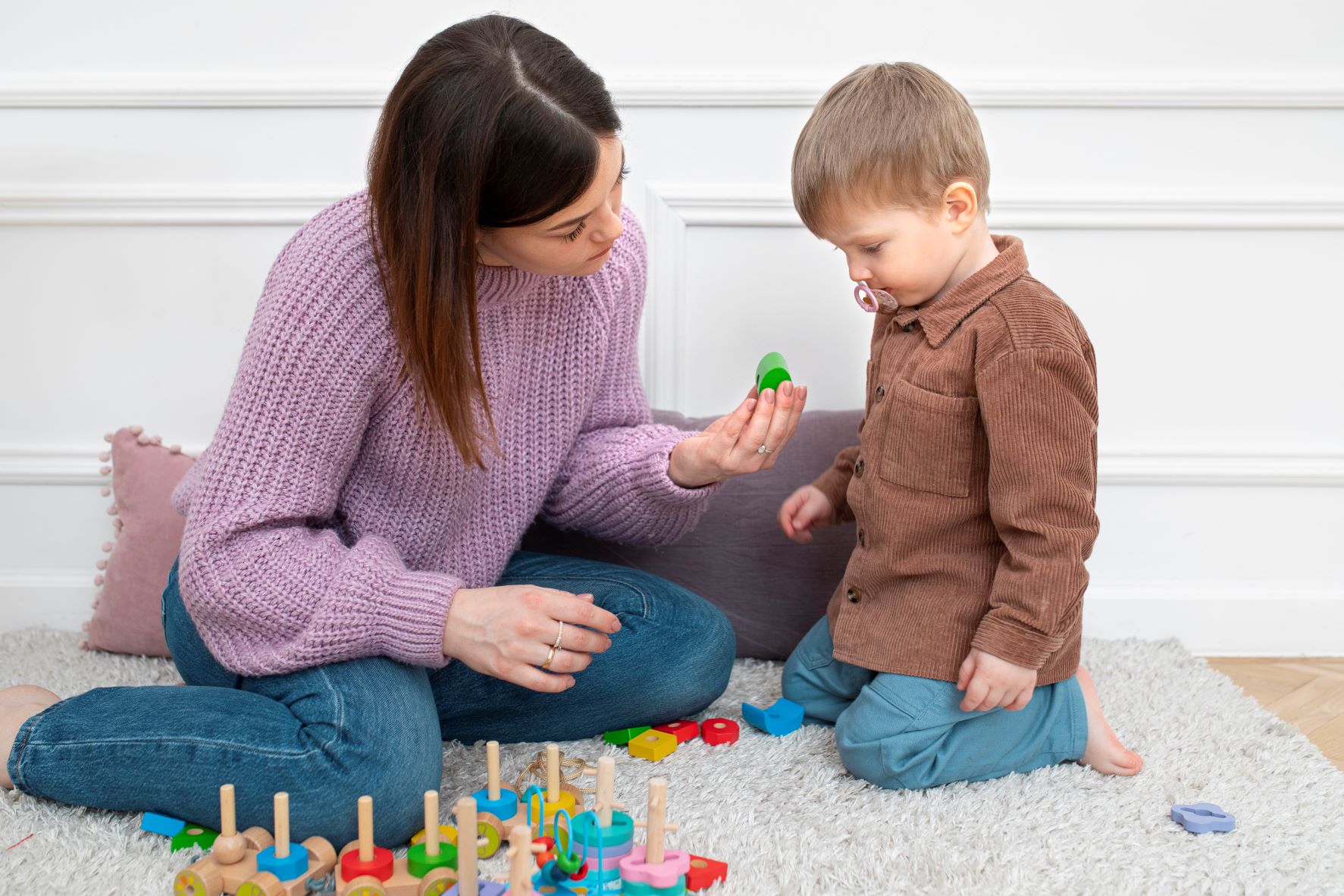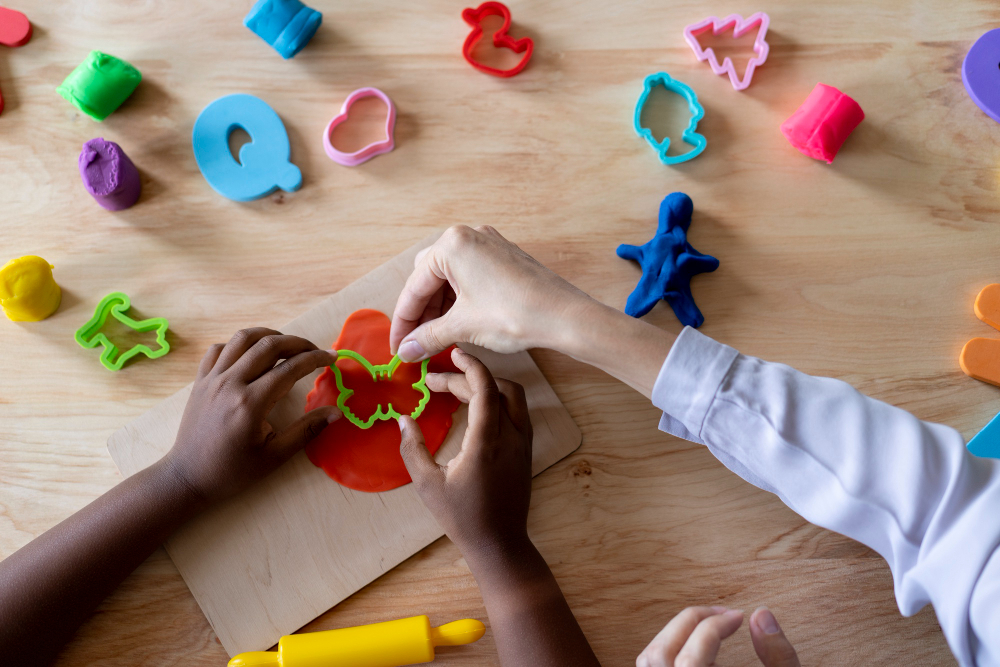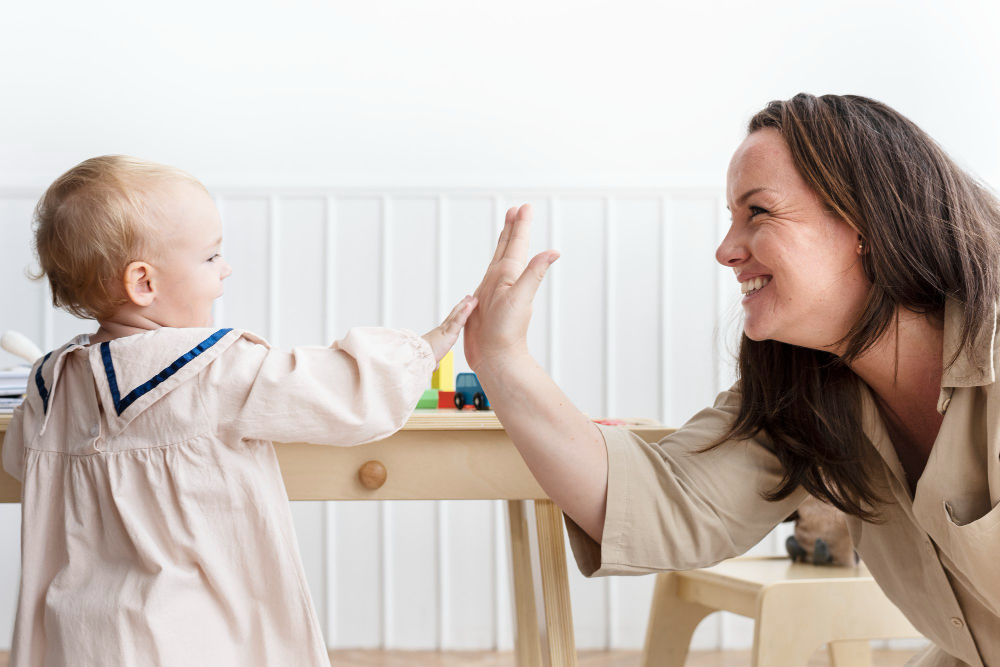Sensory Integration (SI) is the normal neurological process of organizing sensations for use in everyday life. We use sensations to survive, learn, and function smoothly. Typically, our brain receives sensory information from our bodies and surroundings, interprets these messages, and organizes our purposeful responses.
Usually, without conscious effort, we make adaptive responses, and we are probably not even aware that our bodies are making these adjustments. In case of an inability to pull together and understand (or process) sensory input, dysfunction occurs in motor and cognitive development, speech, and behavior.
The sensory integration process begins with the first weeks of fetal life and most intensively proceeds to the end of preschool age. No part of the central nervous system works by itself: information is transferred from one part to the other.
Touching helps to see, vision to keep balance, balance to feel the body’s position in space and between moving, and the movement helps to learn. The brain needs stimulation. Stimulation excites the brain and creates its functional activity. From birth, children develop only under the condition of constant stimulation by sensations from their own bodies and environment. A huge amount of sensory information goes to our brain every second. The brain must organize it, choose the most important and necessary, and reject unnecessary from the numerous incoming sensory signals.
If the child was born healthy and his sensory stimulation is normal, then he has no problems with developing motor skills, speech, and behavior. Children who have not had sufficient sensory stimulation at the beginning of life for some reason develop a variety of delays.
How a child processes the surrounding and internal information affects the development of his feelings, thoughts, and actions. The slightest disturbances in brain activity processes may affect how the child masters household skills, learns, and communicates. With age, problems multiply, and there are difficulties with development, schooling, and behavior. Sensory stimulation and accumulated experience contribute to the growth and development of the child.
Swiss child psychologist Jean Piaget said that the foundation of children’s intelligence is sensorimotor activities. A one-year-old child grabs any objects. He needs to touch everything literally and pulls them into his mouth. The child learns not only to grasp – they hone the accuracy of the movement of the hands and fingers, learn to coordinate these movements with vision, form an idea of space not theoretically but practically – to take a spoon or cup, drink or eat. :
“The child learns not only to grasp but hones the accuracy of the movement of the hands and fingers, learns to coordinate these movements with vision, forms an idea of space not theoretically but practically, for instance, to take a spoon or cup, drink or eat,”
Hundreds of times, the child repeats these movements day after day, week after week, until they become automatic. At this time, in his brain, some processes facilitate and automate movements, sensations, and feelings. Sensorimotor intelligence is collected gradually, grain by grain, and becomes the basis of deep nonverbal intelligence.
The brain can remarkably adapt sensory information to the requirements of the environment and to human needs and inhibit sensory information that is unessential for a given purpose. When we get used to certain sensory sensations/information, the brain automatically ignores them. If the information is not blocked at the moment, the brain can be overly stimulated or overloaded. Unfortunately, many children have not developed a protective inhibitory ability of the nervous system.
This can be expressed in absent-mindedness, hyperactivity, or impulsiveness. The child acts as if has no “brakes”. He/she is unable to respond to certain sensory information properly. With too much information, the brain is overloaded, and the child is forced to avoid new sensations. When the information is too little, the brain searches for additional sensory stimuli.
Disturbance of the perception and processing of sensory signals (excessive or insufficient sensitivity to tactile, visual, auditory stimuli, and motion) results in certain signs and symptoms. For example, a child afraid of unexpected or loud sounds closes their ears with their hands, can not walk on a busy street, and looks scattered in a noisy environment.
Extreme sensory issues are very common in autism. Autistic children with sensory issues have difficulty filtering sensory input. Their nervous systems do not know what to block out and what to amplify.
All these children have a “mono-channel” nature of perception.
Children experience discomfort because a certain modality’s sensory signals prove too strong for them. In this case, children have sensory defensiveness syndrome – a steady desire to avoid such irritants. Sensory defensiveness occurs in tactile, auditory, visual, vestibular, olfactory, and gustatory modalities (tactile in all children). It is obvious that children with sensory integration dysfunction can not cope with the above problems, and occupational therapists (OT) can help by using modern proven, and well-established methods of teaching and assessing skills to develop a carefully structured individual program for each child.
When selecting “sensory” therapy for our children, special attention needs to be paid to the development of methods for “polysensory” perception: Firstly, improvement of certain perceptual abilities (visual, auditory, tactile, etc.). Secondly, it provides a sensory-rich and safe environment that enables the child with opportunities to use their internal senses (vestibular, proprioceptive, interoceptive, tactile) to connect with their external sensory systems (vision, auditory), in sensory modulation, posture, and/or to create functional results in practice.
Hope this helps!
Best regards,
Gayane Zakaryan, Head of Rehabilitation Services, “ArBeS” Healthcare Center



